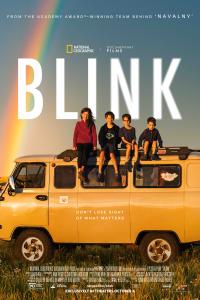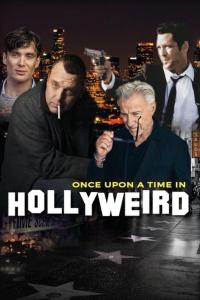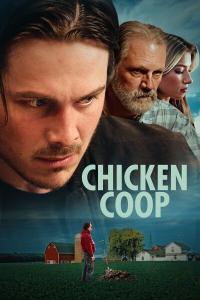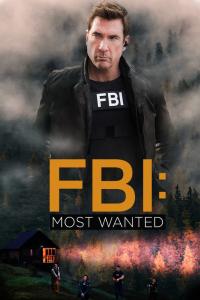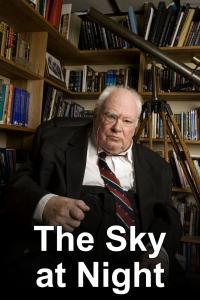Torrent details for "The Sky at Night 9.January.2022 Dark Skies (1280x720p HD, 50fps, soft Eng subs) " Log in to bookmark
Controls:
Category:
Language:
 English
EnglishTotal Size:
1.05 GB
Info Hash:
c26294f6060d842ca3250de78616986f864427c4
Added By:
Added:
15-11-2022 00:09
Stats:
| Update
Genres:
Name
DL
Uploader
Size
S/L
Added
Title:
The Sky at Night (1957)
Genre:
Documentary
Runtime:
20 min - Rating: 8.4
Director:
n/A
Cast:
Plot:
Season: 1 Years: 2018 2017 2016 ... See all »
The Sky at Night 9.January.2022 Dark Skies (1280x720p HD, 50fps, soft Eng subs)
Dr Maggie Aderin-Pocock and Professor Chris Lintott visit the Van Gogh Immersive Experience to seek inspiration in one of the world's most famous works of art, Starry Night. How can we mitigate the effects of light pollution so that the beauty of the night sky captured by Van Gogh might be preserved in the real world for future generations? / / Images and data from satellites have made it easy for us to visualise the extent of the growing effects of light pollution around the world, but speaking with Professor Kevin Gaston from the University of Exeter, Chris discovers that our current estimates show that global light pollution could be much worse than past data suggests. Without satellites capable of analysing the light emitted from the now-popular bluer LED lighting, he estimates that the true levels of light pollution could be around 200% more than was previously thought. Kevin and Chris discuss how light pollution is not just a problem for astronomers but can have devastating effects on animal behaviour and human health. / / Pete Lawrence visits one of the few places in the UK where you might still be able to catch a glimpse of the Milky Way. In Moore's Reserve, named after Sir Patrick Moore, Pete meets up with Dark Skies Officer and South Down National Park ranger Dan Oakley, whose public outreach and passion for astronomy helped to get Dark Sky Reserve status for the area. Together they talk about the way towns and cities might change to help create more dark sky areas for the public to enjoy. / / In contrast, atop Television Centre in London - one of the country's brightest cities - Chris joins the Baker Street Irregular Astronomers under a bright city night sky. The group demonstrate some tips and tricks to show us that, no matter where you are, you can still view and image some spectacular night sky objects. / / And finally, Maggie looks at the latest risk to clear views of the night sky, mega-constellations and how satellite streaks that were once a novelty and easy to avoid are now becoming a nuisance to researchers and astronomers in many disciplines. Speaking to Tim Stevenson from the Square Kilometre Array Observatory, they discuss how mega-constellations disrupt radio telescopes that rely on a particular waveband to help their research of everything from galaxy formations and the chemical markers of life in the universe.

First broadcast: 9 January 2022
Duration: 30 minutes
Torrent dead? Request reseed at torrentgalaxy.org - or ask at elsonroa at tutanota.com
Media info:
General
Format : MPEG-4
Format profile : Base Media
Codec ID : isom (isom/iso2/avc1/mp41)
File size : 1.05 GiB
Duration : 29 min 3 s
Overall bit rate mode : Variable
Overall bit rate : 5 175 kb/s
Video
ID : 1
Format : AVC
Format/Info : Advanced Video Codec
Format profile : High@L3.2
Format settings : CABAC / 4 Ref Frames
Format settings, CABAC : Yes
Format settings, Reference frames : 4 frames
Codec ID : avc1
Codec ID/Info : Advanced Video Coding
Duration : 29 min 3 s
Bit rate mode : Variable
Bit rate : 5 036 kb/s
Maximum bit rate : 7 605 kb/s
Width : 1 280 pixels
Height : 720 pixels
Display aspect ratio : 16:9
Frame rate mode : Variable
Frame rate : 50.000 FPS
Minimum frame rate : 25.000 FPS
Maximum frame rate : 90 000.000 FPS
Color space : YUV
Chroma subsampling : 4:2:0
Bit depth : 8 bits
Scan type : Progressive
Bits/(Pixel*Frame) : 0.109
Stream size : 1.02 GiB (97%)
Color range : Limited
Color primaries : BT.709
Transfer characteristics : BT.709
Matrix coefficients : BT.709
Codec configuration box : avcC
Audio
ID : 2
Format : AAC LC
Format/Info : Advanced Audio Codec Low Complexity
Codec ID : mp4a-40-2
Duration : 29 min 3 s
Bit rate mode : Variable
Bit rate : 128 kb/s
Maximum bit rate : 159 kb/s
Channel(s) : 2 channels
Channel layout : L R
Sampling rate : 48.0 kHz
Frame rate : 46.875 FPS (1024 SPF)
Compression mode : Lossy
Stream size : 26.6 MiB (2%)
Language : English
Dr Maggie Aderin-Pocock and Professor Chris Lintott visit the Van Gogh Immersive Experience to seek inspiration in one of the world's most famous works of art, Starry Night. How can we mitigate the effects of light pollution so that the beauty of the night sky captured by Van Gogh might be preserved in the real world for future generations? / / Images and data from satellites have made it easy for us to visualise the extent of the growing effects of light pollution around the world, but speaking with Professor Kevin Gaston from the University of Exeter, Chris discovers that our current estimates show that global light pollution could be much worse than past data suggests. Without satellites capable of analysing the light emitted from the now-popular bluer LED lighting, he estimates that the true levels of light pollution could be around 200% more than was previously thought. Kevin and Chris discuss how light pollution is not just a problem for astronomers but can have devastating effects on animal behaviour and human health. / / Pete Lawrence visits one of the few places in the UK where you might still be able to catch a glimpse of the Milky Way. In Moore's Reserve, named after Sir Patrick Moore, Pete meets up with Dark Skies Officer and South Down National Park ranger Dan Oakley, whose public outreach and passion for astronomy helped to get Dark Sky Reserve status for the area. Together they talk about the way towns and cities might change to help create more dark sky areas for the public to enjoy. / / In contrast, atop Television Centre in London - one of the country's brightest cities - Chris joins the Baker Street Irregular Astronomers under a bright city night sky. The group demonstrate some tips and tricks to show us that, no matter where you are, you can still view and image some spectacular night sky objects. / / And finally, Maggie looks at the latest risk to clear views of the night sky, mega-constellations and how satellite streaks that were once a novelty and easy to avoid are now becoming a nuisance to researchers and astronomers in many disciplines. Speaking to Tim Stevenson from the Square Kilometre Array Observatory, they discuss how mega-constellations disrupt radio telescopes that rely on a particular waveband to help their research of everything from galaxy formations and the chemical markers of life in the universe.

First broadcast: 9 January 2022
Duration: 30 minutes
Torrent dead? Request reseed at torrentgalaxy.org - or ask at elsonroa at tutanota.com
Media info:
General
Format : MPEG-4
Format profile : Base Media
Codec ID : isom (isom/iso2/avc1/mp41)
File size : 1.05 GiB
Duration : 29 min 3 s
Overall bit rate mode : Variable
Overall bit rate : 5 175 kb/s
Video
ID : 1
Format : AVC
Format/Info : Advanced Video Codec
Format profile : High@L3.2
Format settings : CABAC / 4 Ref Frames
Format settings, CABAC : Yes
Format settings, Reference frames : 4 frames
Codec ID : avc1
Codec ID/Info : Advanced Video Coding
Duration : 29 min 3 s
Bit rate mode : Variable
Bit rate : 5 036 kb/s
Maximum bit rate : 7 605 kb/s
Width : 1 280 pixels
Height : 720 pixels
Display aspect ratio : 16:9
Frame rate mode : Variable
Frame rate : 50.000 FPS
Minimum frame rate : 25.000 FPS
Maximum frame rate : 90 000.000 FPS
Color space : YUV
Chroma subsampling : 4:2:0
Bit depth : 8 bits
Scan type : Progressive
Bits/(Pixel*Frame) : 0.109
Stream size : 1.02 GiB (97%)
Color range : Limited
Color primaries : BT.709
Transfer characteristics : BT.709
Matrix coefficients : BT.709
Codec configuration box : avcC
Audio
ID : 2
Format : AAC LC
Format/Info : Advanced Audio Codec Low Complexity
Codec ID : mp4a-40-2
Duration : 29 min 3 s
Bit rate mode : Variable
Bit rate : 128 kb/s
Maximum bit rate : 159 kb/s
Channel(s) : 2 channels
Channel layout : L R
Sampling rate : 48.0 kHz
Frame rate : 46.875 FPS (1024 SPF)
Compression mode : Lossy
Stream size : 26.6 MiB (2%)
Language : English









